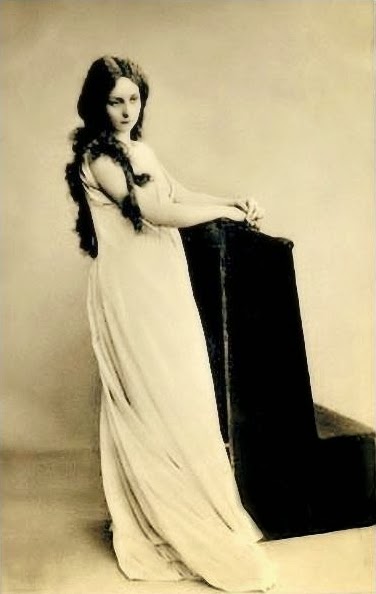Neo-Realist poet, writer and film director Pier Paolo Pasolini made his startling film The Gospel According to St Matthew (IIl Vangelo Secondo Matteo) in 1964 when he already had a reputation for producing controversial work. A decade later he would make his notorious critique of fascism – Salo or 120 Days of Sodom – banned in many countries for its graphic depictions of sadistic sexual abuse. The Gospel, however, is restrained in its use of violence, despite the ripe opportunity for gore offered by Jesus's death, most fully exploited so far in Mel Gibson's 2004 The Passion of the Christ.
Although a radical Marxist throughout his adult life, Pasolini's childhood was steeped in the Roman Catholic Church and he insisted that his film would not be an attack on Christianity, but a devotional work that he wanted screened in parish churches throughout Italy at Easter time – an idea that had the more conservative priests spluttering into their cappuccinos and reaching for the garlic.
Pasolini's hallucinatory realism in this film creates an effect of immediacy, of the witnessing of actual events as they unfold through documentary-style techniques like the use of a hand-held camera, which is hauntingly effective when it records the grief of Christ's mother at the crucifixion - a part played, incidentally, by Pasolini's own much-adored mother. Iconic scenes are approached from casual, apparently accidental angles: the nativity scene is shot from several feet above, looking down on the holy family, and the interrogation of Jesus is half-obscured by the heads of the onlookers. We, as the viewer, become implicated as one of the crowd straining to see his humiliation. The rough, threadbare clothes of the people, the heavy, unwinged, unhaloed angel Gabriel, and the bleak landscape shot in subdued monochrome are in stark contrast to the white shining robes and golden light that are staples of the 1950s’ biblical epics.
This film, then, appears to replay the sixteenth-century Reformation’s project of stripping religious representations of all their artifice and show, of their sensuous surfaces, their gold-leaf haloes, their glut of angels, their reveling in Christ's agony, and returning them to an austere, muted reality. The Reformists feared that the people had become so dazzled by the beauty, and beautiful violence, of these images that they had come to fetishize them, to see them not as representations of God, but as mini-gods to be worshipped in their own right. Their solution was to order a spree of destruction, with the torching and defacing of religious paintings and icons throughout Northern Europe.
But it is this very immediacy – this ‘realism’ – in Pasolini’s film that leads to a sensory deception that is also in danger of, ironically, being a form of fetishization: Pasolini wrote how he was determined to use 'no screenplay' but only dialogue that is ‘strictly that of St Matthew,’ but this causes him to border on fetishizing Matthew’s gospel, so that Matthew’s account of an event displaces the event (Jesus’s life) itself; it submerges it.
The risk of this happening – of a text being mistaken for the thing itself – is ingeniously avoided in the New Testament by the use of four witness accounts, the gospels of Matthew, Mark, Luke and John, offering diverging perspectives, so there is a distance between these fragmentary texts and the thing they describe, which remains beyond them, elusive, something that the texts can only point towards.
The implicit promise offered to the faithful in Corinthians 13 is that this distance will be dissolved at the time of the apocalypse, but not before. "Now we see through a glass darkly, but then, face to face." A classic case of dangling the promise of jam tomorrow, but the intense realism Pasolini’s film creates, at least in the hallucinatory moment of watching it, the fiction for the viewer that the distance between them and Christ has collapsed: that he is on the cusp of stepping through that darkened glass.
The Gospel According to Saint Matthew (Italian: Il Vangelo Secondo Matteo). Dir. Pier Paolo Pasolini. Titanus Distribuzione S.p.a, 1964. Running Time: 133 min.
But it is this very immediacy – this ‘realism’ – in Pasolini’s film that leads to a sensory deception that is also in danger of, ironically, being a form of fetishization: Pasolini wrote how he was determined to use 'no screenplay' but only dialogue that is ‘strictly that of St Matthew,’ but this causes him to border on fetishizing Matthew’s gospel, so that Matthew’s account of an event displaces the event (Jesus’s life) itself; it submerges it.
The risk of this happening – of a text being mistaken for the thing itself – is ingeniously avoided in the New Testament by the use of four witness accounts, the gospels of Matthew, Mark, Luke and John, offering diverging perspectives, so there is a distance between these fragmentary texts and the thing they describe, which remains beyond them, elusive, something that the texts can only point towards.
The implicit promise offered to the faithful in Corinthians 13 is that this distance will be dissolved at the time of the apocalypse, but not before. "Now we see through a glass darkly, but then, face to face." A classic case of dangling the promise of jam tomorrow, but the intense realism Pasolini’s film creates, at least in the hallucinatory moment of watching it, the fiction for the viewer that the distance between them and Christ has collapsed: that he is on the cusp of stepping through that darkened glass.
The Gospel According to Saint Matthew (Italian: Il Vangelo Secondo Matteo). Dir. Pier Paolo Pasolini. Titanus Distribuzione S.p.a, 1964. Running Time: 133 min.
Copyright Catherine Rosario









.jpg)

